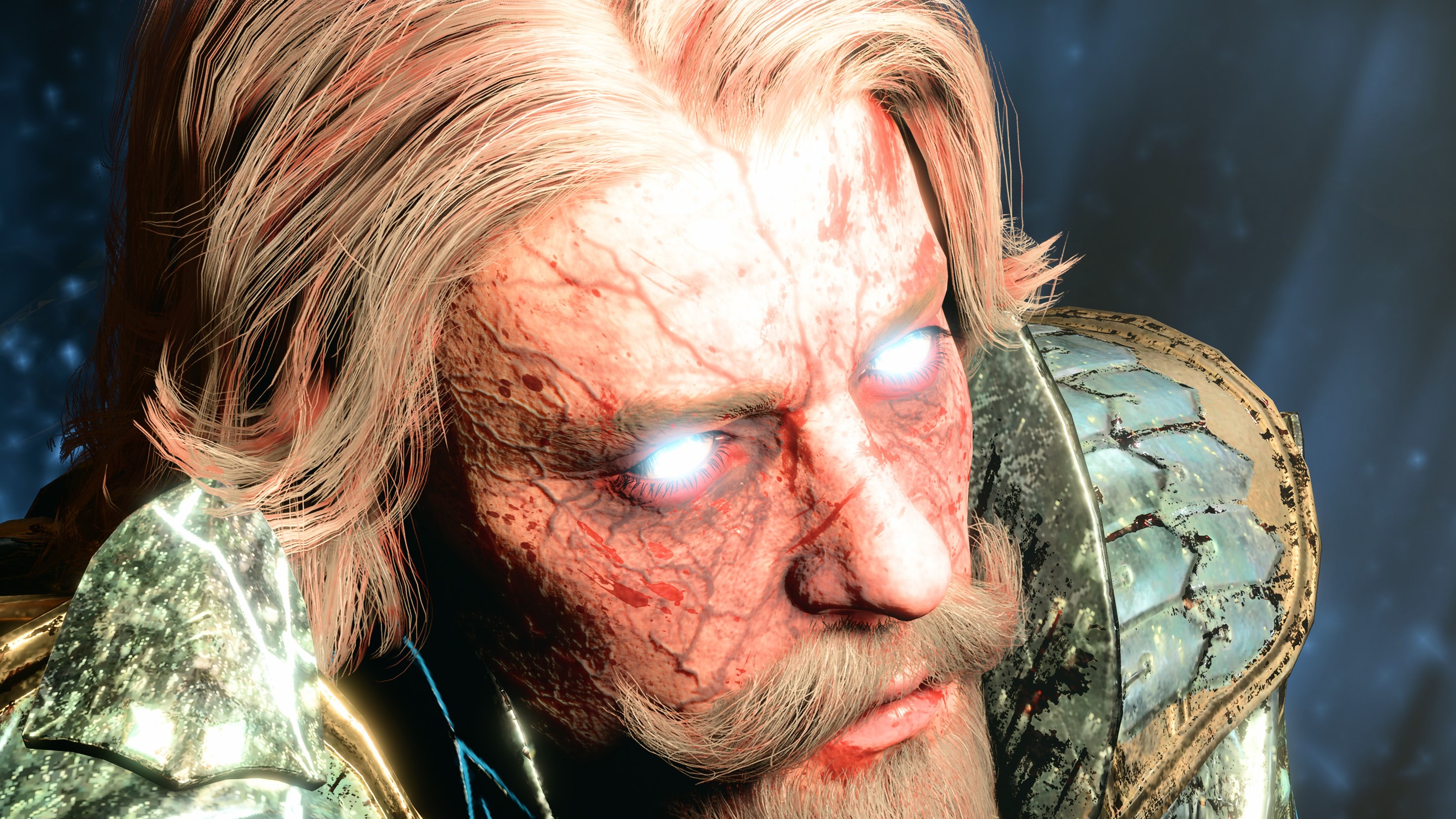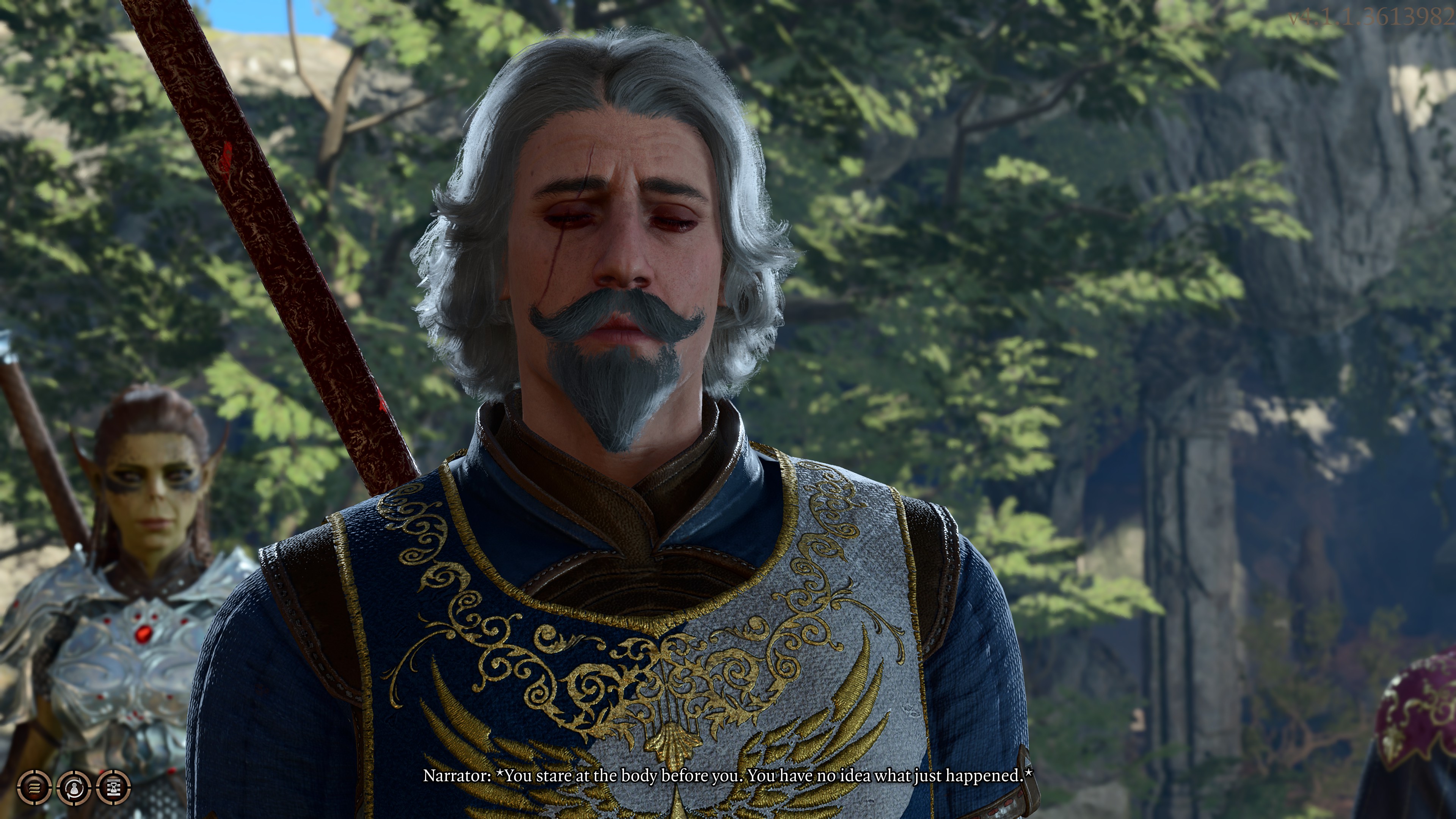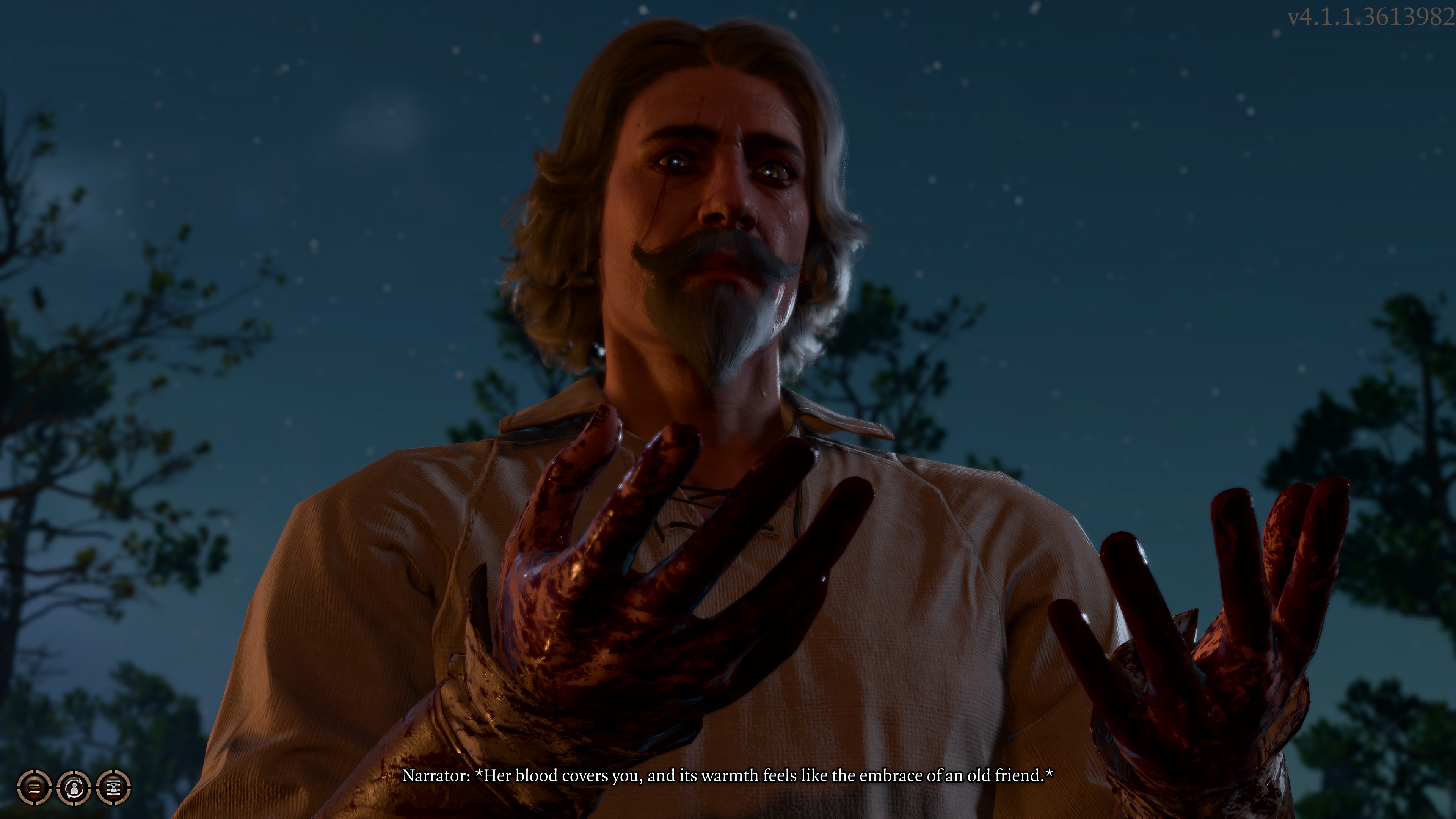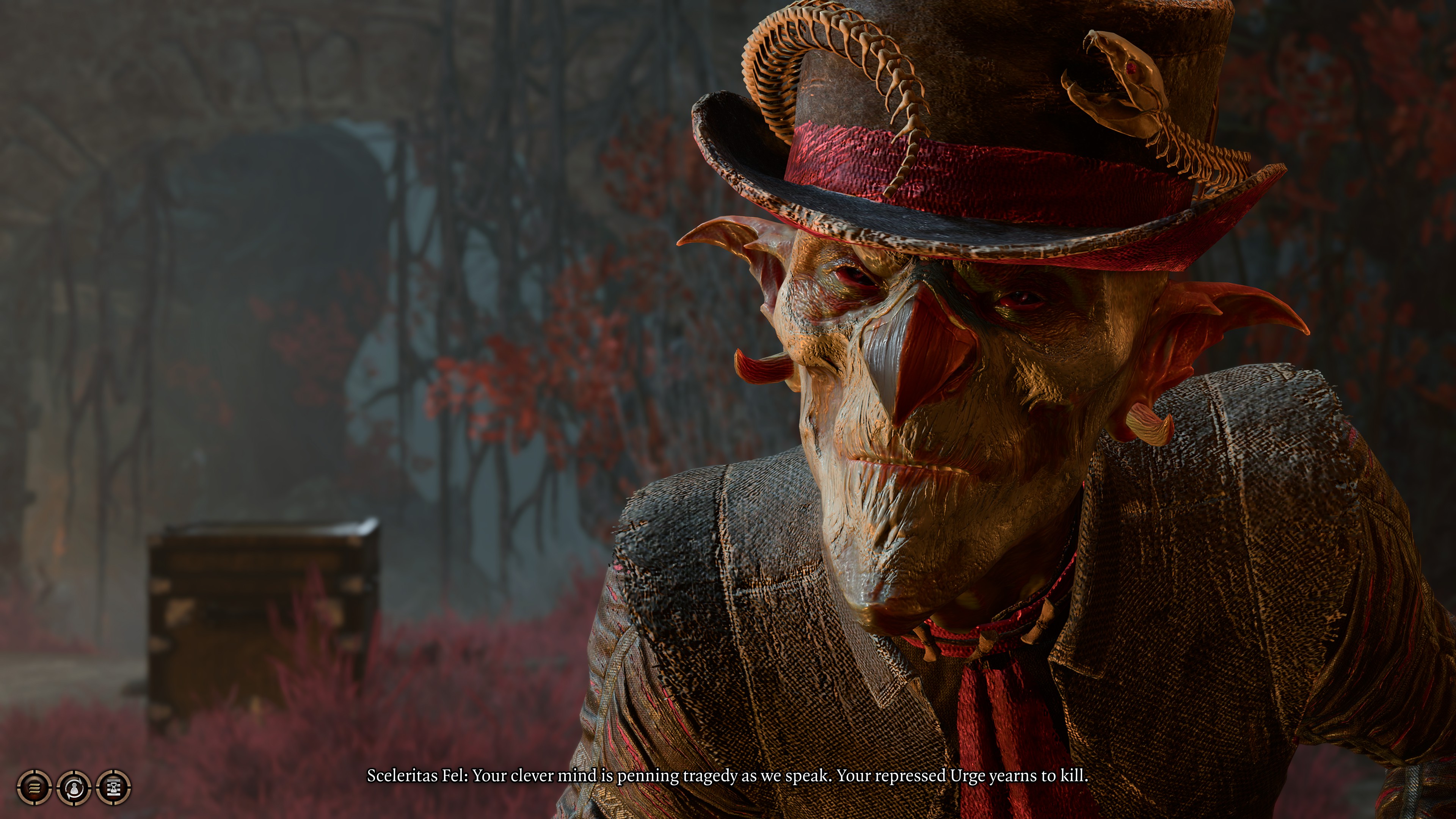
Tamail is a Paladin sworn to an Oath of Devotion, dedicated to living in the archetypal image of the knight in shining armour. He is pledged to a life of clemency helping those in need, obeying just laws, and supporting those in his care.
There's just one problem. He can't stop thinking about murdering people.
You see, Tamail is also afflicted by the Dark Urge, a constant irrepressible desire to kill in the most depraved, unholy ways possible. We're talking the kind of monster who gets off at the smell of viscera, who mumbles things like "Dream in red" as he wanders around Faerûn allegedly protecting the meek.
In short, he's one disturbed little guy, the result of two diverging urges of my own. See, I always play as a goody two shoes in RPGs. But I was also fascinated by the Dark Urge character when Larian revealed it just prior to Baldur's Gate 3's full launch. I expected picking between them to be difficult, but as it turned out I didn't need to choose. The Dark Urge isn't a specific character, but an archetype you can apply any appearance and class to. So, I figured "Why not both?" and opted to see what happens if you roll with both extremes at the same time.
Events proceed mostly normally for roughly half of Act One. Tamail's constant fantasising about killing his companions is slightly troubling, and there's an incident involving a squirrel I'd rather not talk about. But beyond that he successfully projects the image of a righteous, law-abiding Paladin. There are even moments when the two sides of his personality align surprisingly well. For example, a goblin imprisoned at the druid grove is about to face some mob justice from some tiefling refugees, and Tamail is able to step in and "pass judgement". This lets him condemn the goblin to a "just" death while getting off on the resulting violence.

For a while I wonder whether Paladin and Dark Urge are more compatible than I initially anticipated. Paladins might be lawful, but that isn't the same as being peaceful. They're smitey, Old Testament sorts, happy to wade in blood so long as its running from sinful veins. As for the Dark Urge, it doesn't seem to care where the blood flows from, only that there's plenty of it. Tamail's constantly receives "Inspiration", a resource that lets you reroll skill checks earned by completing hidden character objectives, from doing stuff a Paladin would probably do anyway. So maybe I manage his paradoxical personality Dexter Morgan style, using my position of authority to satisfy my urge while directing it toward "deserving" targets.
Unfortunately, the Urge has other ideas. This becomes clear when a new character joins the camp one evening, and Tamail wakes up the next morning to discover he's been playing with his new friend's internal organs in his sleep.
The fact that Tamail has just killed someone in cold blood is a huge deal in and of itself, depicted in a dramatic sequence where you decide what to do with the body. But because Tamail is a Paladin, there's an additional layer of consequence to his actions. Killing an innocent directly contravenes Tamail's sworn oath, and a Paladin's oath doesn't let them off lightly. On the plus side, this means I get to meet one of the coolest side characters in the game, the Oathbreaker Knight, essentially a guidance counsellor for wayward Paladins. But it also means all Tamail's divine powers are replaced with necrotic abilities, making him some sort of twisted necroPaladin.

From this point onward, my goal for the game centred around getting Tamail's oath back. But not immediately. It seemed prudent to wait at least until I knew exactly what was wrong with my messed up little Pally. Plus, I wanted to check out this new side to my character. As the Oathbreaker Knight explains to Tamail, while his new powers might come from evil, that doesn't mean they have to be used for evil. Also, Oathbreakers get their own set of dialogue choices, scoffing at creeds and displaying empathy towards slaves and indentured servants.
The next stint of Tamail's adventure is pretty messy. When he finds a book of red necromancy, he inhales it like it's the next Game of Thrones novel, despite his party's repeated protestations. And he readily accepts the reward he receives for his brutal sleep murder. What? It's a stylish red cape that turns me invisible when I kill someone in combat. Who wouldn't want that?
Although he makes some questionable decisions, Tamail never consciously steps beyond the point of no return. When it comes to a crunch decision in Act 2, I opt not to do the terrible thing the Urge wants me to do. The Urge doesn't like this, of course, and turns its wrath on the party member I'm closest to. Luckily, that's Lae'zel, who is just the right person to help a compulsive killer through his withdrawal phase. Partly because she kinda gets it, no stranger to the dark thrill of killing herself. Mostly though, it's because she'll murder Tamail if he so much as bites her ankles.

Moving into Act 3, I finally discover the source of Tamail's little problem, and without spoiling the reveal, it's so serious and contrary to his class that Tamail has a dialogue option to ask the Oathbreaker Knight "how could I have ever become a Paladin?". The Knight responds that it's our choices that define us, not our origins. So I make my own choice right there, to re-swear my oath there and then. I expect this to be some lengthy, arduous process, like curing vampirism in Oblivion. But I just need to pay the Oathbreaker Knight 1,000 gold, which as absolution goes is a little underwhelming.
Yet while Tamail may be a Paladin again, he isn't cured of his Urge yet. It might have been smarter to wait until the Urge is fully quelled before returning to his Paladin ways, but apart from the fact that I don't know whether that's possible, it also would be less fun. Tamail's successfully resisted the Urge once, but it's still there, nagging at his mind as he strives to right wrongs across Baldur's Gate, providing inspiration every time there's a particularly bloody combat encounter, and revelling in grisly crime scenes of murders being perpetrated across the city. There are times when I can consciously resist the Urge, but I never know for sure what's going to happen when I go to sleep at night.

Everything comes to a head in a climactic encounter deep beneath the foundations of Baldur's Gate, where Tamail confronts the source of his Urge. It's a place you visit in the main story, but the Dark Urge archetypes makes these scenes significantly more personal. Indeed, trying to rid yourself of the Urge comes at a significant cost to your character, resulting in one of the most surprising and dramatic scenes in the game.
There's no canonical way to play Baldur's Gate 3, but the combination of Dark Urge and Paladin facilitates an especially rich and rewarding character arc. Juggling its contrasts, trying to game the system, then deciding how to piece yourself together when everything falls apart. It makes playing as a boring old Paladin immeasurably more interesting, and adds further twists to the bloody rollercoaster that is the Dark Urge's storyline.







